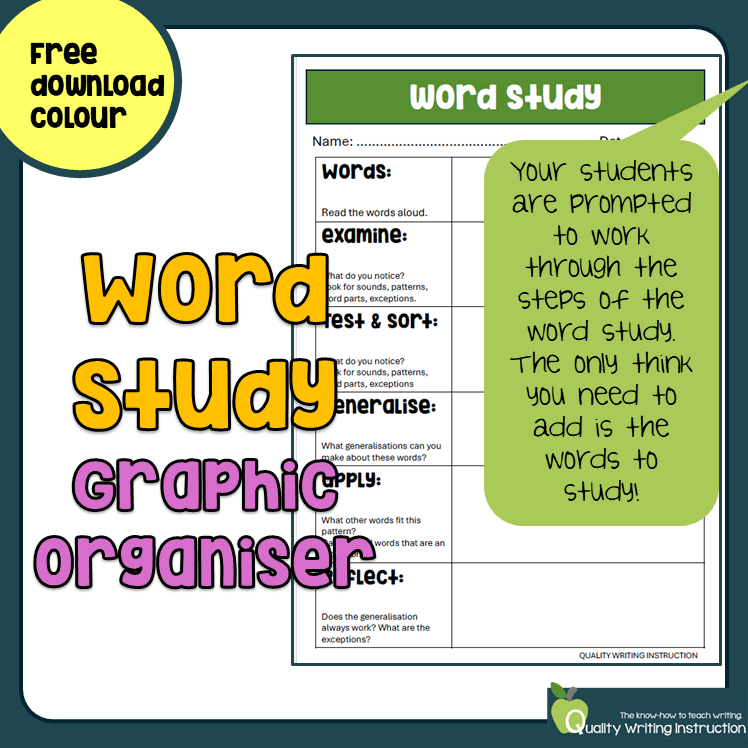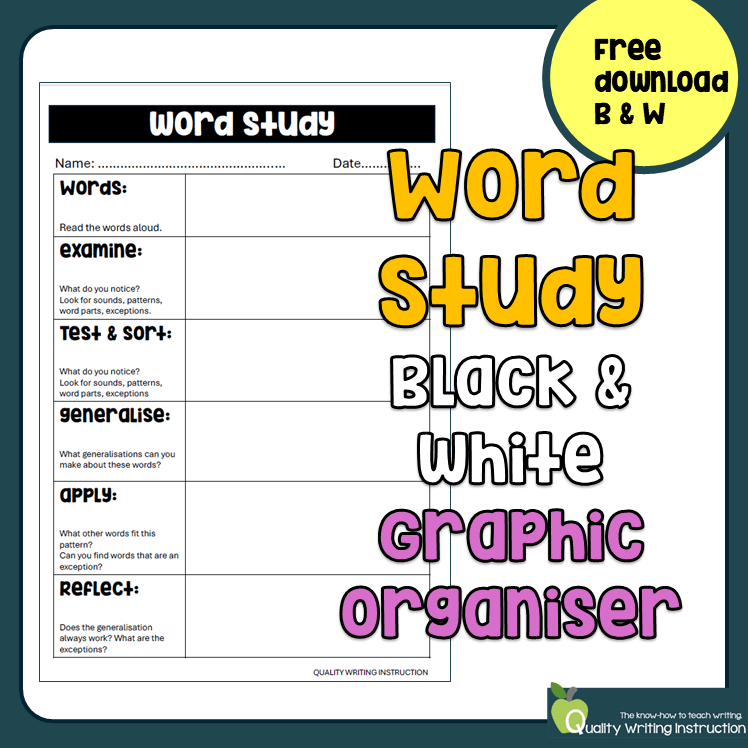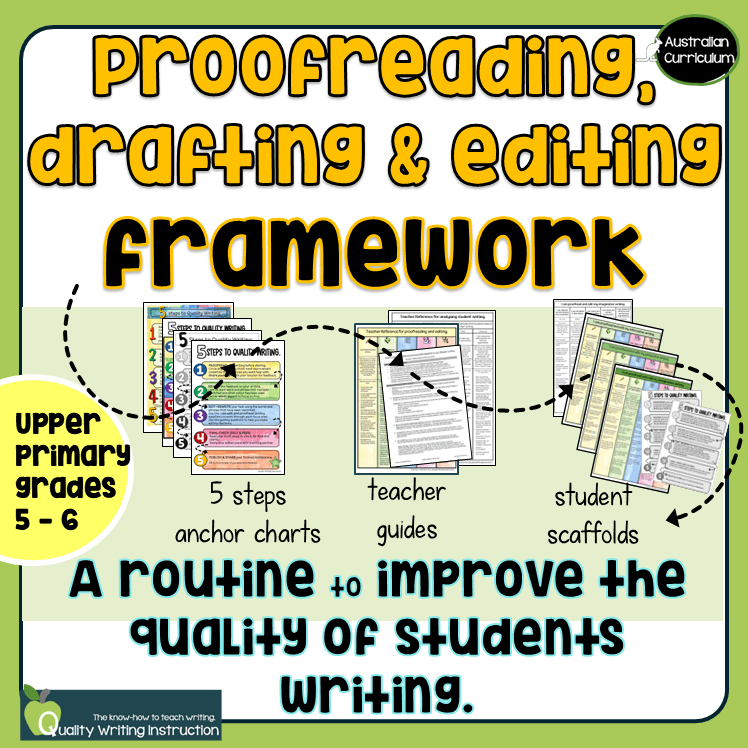Teaching Spelling: 5 Small Changes for Big Impact!
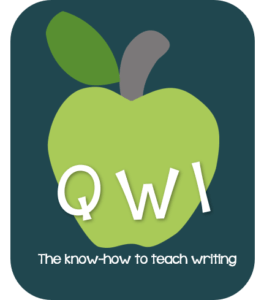
Teachers are always looking for effective spelling instruction strategies. With the research supporting the Science of Reading, we know spelling matters! But we also know how easy it is for teaching spelling to slip down the list when reading, writing, and assessment pressures compete for our time and effort! The good news is that there are strategies for spelling instruction that can be easily built into everyday classroom routines without the need for new programs, expensive resources, or extra planning time.
When I started teaching (a long time ago now) my spelling instruction was a weekly list and a Friday test. I don’t really think I ‘taught’ spelling but rather my students ‘learned’ it through lists with no connection to what I was teaching. My students would memorise a handful of words, we’d tick the assessment box, and I’d diligently add up how many words they got right each term to give them an overall rating! This teaching of spelling feels so strange to me now, especially with my love for words and how they work.
Research is showing what I think we all knew deep-down; those old routines for teaching spelling don’t give students the lasting knowledge they need. There have been significant shifts in what we know about how to teach spelling, which is good news for us, but even better news for our students.
To help you manage the significant shifts without feeling overwhelmed, here are five evidence-based changes you can try in how you teach spelling. I have selected five simple changes that have the biggest impact on spelling instruction (and sprinkled in some free resources to help you implement the change to your spelling instruction!)
1. Build in Morphology to Strengthen Spelling!
This change punches above its weight! Not only is it effective, but it helps build that love of language and curiosity about how words work that students need! For even more impact, introduce morphology into the early years spelling instruction.
A 2025 study at Australian Catholic University found that teaching morphology doesn’t just help students spell the words you directly teach. It helps them generalise that knowledge to the new words they encounter as well. Unfortunately, recent surveys have found that morphology remains a weak point even in Years 5 and 6, especially when it comes to derivational suffixes, Greek and Latin roots, and homophones (Daffern, 2021).
Small changes:
- Start to explore morphology in the early years and keep building on it. Start with the simple affixes students encounter as they read.
- Instead of only focusing on sound-spelling links, spend a few minutes each week to unpack how affixes change word meaning: happy → happier → happiness.
- Model and explicitly demonstrate how you ‘think’ when you come across words you are not sure of during reading and writing instruction. Highlight the morphology of words as you think aloud.
Big results:
- Students stop thinking of every new word as something they need to memorise.
- They begin spotting patterns and words connected through morphology. If they understand what the morphemes mean not only do they have ‘spelling’, they have ‘meaning’!
- They grow a bank of morpheme knowledges that transfer across words and even subject areas. Imagine recognising the connection between autobiography and antibiotics are words related through a common root word!
- And the best bit? Teaching morphology helps students improve in spelling, writing and reading, even words they haven’t been explicitly taught. If you make one change today, make it this one!
To get you started here’s a simple graphic organiser your students can use to pull words apart and look at how meaning is made. Suitable for learning to spell words in any subject area. We’ve got heaps more to share here so make sure you stick with us!
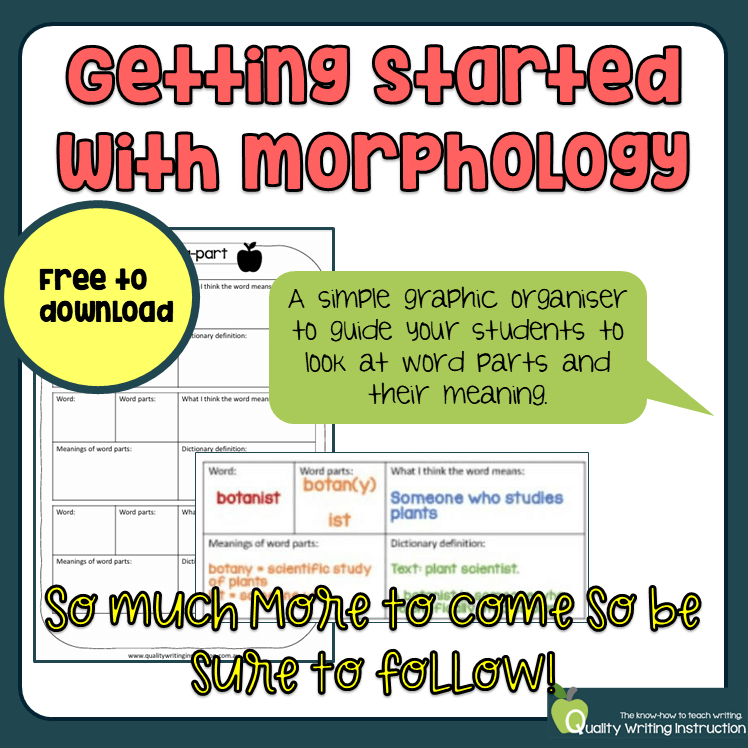
2. Use Error Analysis to Drive Spelling Instruction.
Spelling errors are goldmines. Attempted spellings reveal a lot about how a student is thinking and show us exactly where they have misconceptions or misunderstandings. But only if we stop and look closely.
Daffern and Fleet (2021) emphasise that systematic spelling error analysis should guide what we teach. When we identify and categorise errors by type: phonological (sound-based), orthographic (letter pattern-based), or morphological (meaning-based) we gain a deeper understanding of how our students think about how words work. Introducing this change to spelling instruction actually helps level the playing field for many students. This is because when we start to look at words through the three lenses and start teaching spelling through them all students add to their spelling strategy bank beyond ‘sound-it-out’. Higher-achieving spellers draw flexibly on multiple strategies, while struggling spellers often rely on sounding out alone (Templeton & Morris, 2000).
Small changes:
- Analyse your students’ writing, and pay attention to their attempted spelling. Pick 10–15 attempted spellings and determine what type of errors they are making. The downloadable “Spelling Analysis Template” will help!
- Review this on the class level and use those patterns to shape your next lesson. For example, if lots of students misspelled words like hopping and hoped, it is time to plan a quick review on the spelling generalisation.
- Create a class error wall or chart where you post “Our tricky words this week” or “Words that Bug Us” and revisit them regularly.
- Encourage students to track their own recurring errors and choose one spelling generalisation to target as a learning goal.
- Change the way you mark spelling. Instead of marking with a big, fat, red cross (you know what I mean), identify which parts of the word represents the correct letters in the correct order, and highlight the areas to improve!
Big results:
- Spelling instruction becomes responsive to the needs of your students. The decisions you make above the next generalisation or letter pattern comes directly from your students’ writing.
- Students start to see their mistakes as useful for improvement, not just ‘errors’.
- Over time, patterns become predictable, and both you and your students know where to focus.
Our ‘Attempted Spelling Analysis Template’ is perfect for looking closely at attempted spelling. The simple instructions will guide you as you annotate and analyse words to make decisions about what to teach next. Let us know when you use it!
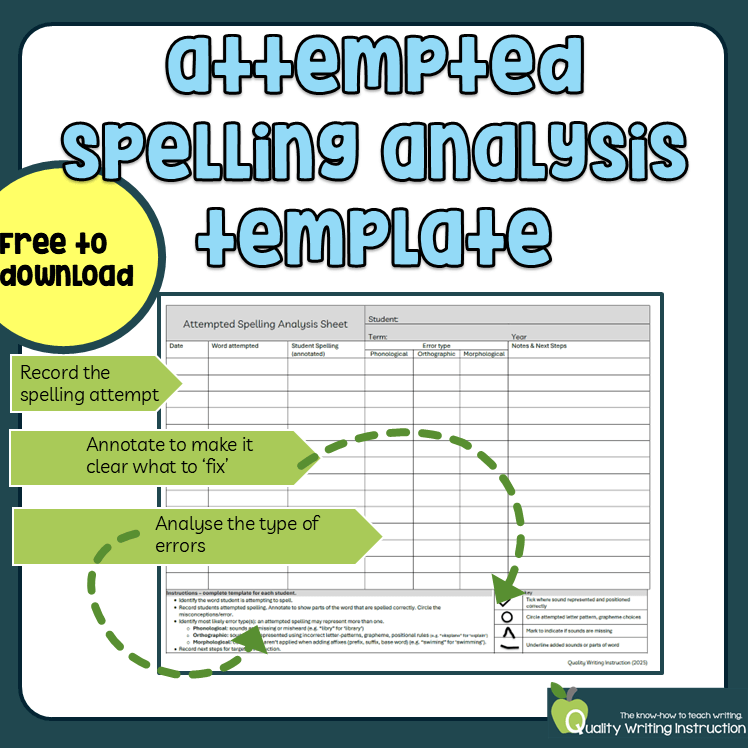
3. Turn Word Lists into Word Study to Teach Spelling.
Weekly word lists and tests are a tradition many of us grew up with. The main trouble with this, is that the spelling rarely stuck! I couldn’t count the number of memories I have of students who would pass the Friday test with flying colours every week, only to misspell half those words in their writing on Monday. Simply, rote memorisation of lists doesn’t transfer well to real writing (Pan, Rickard & Bjork, 2021).
So, what actually works? Interactive practice. This simply means getting students to actively work with words, sorting, comparing, discussing, and applying patterns, rather than just copying or memorising them. This practice makes a much bigger difference because it encourages students to think about how words work, not just how to memorise them. When students explore words through patterns, word families, generalisations and relationships, they are engaging with the underlying systems of spelling. This kind of analysis strengthens orthographic and morphological knowledge, which are the very skills linked to long-term spelling success (Graham & Santangelo, 2014; Daffern, 2021). It also makes spelling “stickier” because students are processing words at a deeper level instead of storing them for a short-term test.
Small changes:
- Instead of asking students to copy lists, turn it into a word sort. Students sort and group words by patterns, make observations and then apply them. This can be an independent or collaborative learning activity. You will find our “Word Study” template really handy for introducing word sorts.
- Give students opportunities to apply known rules to untaught words. Add one or two mystery words or wild card words that are connected to the learned generalisations to the Word Study. Have students predict and then check how the words are spelled based on what they know. Another great collaborative learning opportunity.
- Include one or two challenge words each week that go beyond the core pattern, such as words with tricky morphology or less common roots. This stretches capable spellers and exposes all students to new word-building knowledge.
Big results:
- Students process spelling more deeply when they compare, contrast, and apply rules. They learn to notice and explain why words are spelled the way they are, instead of just memorising them.
- Discussing patterns with peers or in whole-class word sorts builds metalinguistic awareness, which is linked to stronger spelling and vocabulary outcomes (Daffern, 2021).
- Instead of isolated practice, students create networks of knowledge around words. This strengthens long-term recall and increases the chance they will apply the same rule correctly in new writing contexts. Bonus, this also supports vocabulary growth!
- Makes learning to spell collaborative, engaging and purposeful, and linked to real writing and word knowledge.
The “Word Study” graphic organiser is so easy to implement. Just print and your students are ready to follow the prompts and unpack the focus words. This is the version to print in colour.
Exactly the same but in black and white, this “Word Study” graphic organiser will help to save on printing costs. Set students up in small groups of 3 or 4 when you first introduce this activity so they can discuss and share what they discover.
4. Make Spelling Visible During Reading and Writing Instruction.
Too often, spelling is treated like an isolated, separate add-on of the literacy block. Instruction is reduced to repetitive work sheets, dictionary work, or lists to memorise and then hope students “transfer” those skills into their independent writing. The problem is that many students do not automatically do this. Rote and copy-heavy activities like these rarely support long-term learning or transfer to real writing (Pan, Rickard & Bjork, 2021).
Spelling instruction has the greatest impact when it is embedded within authentic writing tasks, not just taught in isolation. Schools that integrated spelling into their writing cycles have found that students show stronger autonomy and greater willingness to attempt unfamiliar words (Daffern et al., 2024). Even better, spelling and reading rely on the same knowledge of phonology, orthography, and morphology. Therefore, teaching spelling also strengthens decoding while also supporting fluent, accurate writing (Moats, 2005, and others!)
Small changes:
- During shared writing, model your spelling decisions while verbalising thinking. Make it explicitly clear to students the questions you ask and the methods you use when you are attempting to spell (and check) unknown words.
- Collect words students are uncertain about spelling. Use these words in mini-lessons or take time to revisit them in Word Study work.
- When editing, ask students to apply one specific spelling lens, instead of “fix everything”.
- Introduce a reliable routine or framework for drafting and editing. If you are looking for a complete system for editing and drafting we have developed ‘5 Steps to Quality Writing’. We’ve linked it below if you’re keen to check it out.
Big results:
- When students see spelling modelled during writing, they learn that it is not separate from composition but part of the same process. This helps close the transfer gap.
- It builds metacognitive awareness. Students begin to think more carefully about the different strategies they can use, rather than relying on letter-sound patterns.
- Students are more likely to use a wider vocabulary. Struggling spellers often simplify their vocabulary to words they are confident to spell. Making spelling visible during writing encourages them to take risks, knowing they have strategies to fall back on.
- Over time, students develop the habit of self-checking and refining spelling as part of the drafting and editing cycle, especially if you have an established routine in place.
Transform your students’ writing from ‘good’ to ‘quality’ with a proven, step-by-step editing framework that builds independence and mastery.
“5 Steps to Quality Writing” will support you to improve the quality of writing conferences, be able to give focussed feedback, and boost students’ writing quality with this ready-to-use resource set.
For sale now on TpT.
5. Use Spaced Retrieval to Foster Lasting Spelling Knowledge.
One of the main reasons spelling does not stick is because practice is often massed into a single week. Students learn a pattern, complete a test, and then move on. Without regular review, those words quickly fade from memory.
Cognitive science is clear on this point. Knowledge is strengthened when it is revisited after intervals, a principle known as spaced retrieval (Cepeda et al., 2006). In spelling, that means students need multiple, short opportunities to recall and apply words and patterns over time, not just a single burst of practice. Research on literacy instruction shows that periodic review is one of the simplest and most effective ways to make learning last (Graham & Santangelo, 2014).
Big results:
- Start each lesson with a structured review of spelling generalisations, or patterns, or even words from previous weeks.
- Use cumulative lists rather than discarding words. Cycle old words back in.
- Run low-stakes quizzes weeks after initial teaching to strengthen memory.
Big results:
- Retrieval practice strengthens long-term memory far more effectively than re-studying or re-copying (Roediger & Butler, 2011). Each time students recall a word, the memory trace becomes more durable.
- Spacing review helps prevent forgetting. Words revisited after a delay are more likely to move into long-term storage, so students can retrieve them automatically during writing.
- By blending old words into current work, students see that spelling knowledge is cumulative and connected.
- This builds fluency and frees cognitive resources. Once high-frequency patterns are automatic, students can focus more attention on composition and vocabulary choice.
What Next for your Spelling Instruction?
None of these changes are dramatic and can be easily integrated into classroom instruction immediately! There are no new programs, or expensive resources, or any major timetable restructure.
What they do require is a shift in mindset. Spelling is really about learning to understand how the English language works. It is a system of knowledge that we can teach in small, powerful ways.
Remember:
- introduce morphology for an easy win
- analyse attempted spelling
- incorporate interactive practice
- make spelling visible
- add spaced reviews
Be sure to download and save the resources we have shared to help make implementation easier for you. Try one or two of these tweaks in your classroom over the next few weeks. Track your students’ errors, their confidence, or even their willingness to take risks in their writing. Spelling still matters and these small changes will have big results for your students!
What else can you do?
We share tips and resources for teachers to help with writing instruction (mainly because we love words and how they work but also because we know that teaching writing can be hard). We’ve got a whole suite of great stuff coming about how to improve Spelling Instruction that you do not want to miss out on! So go ahead choose your favourite way for keeping in the loop!
“The Lounge” is Quality Writing Instruction’s Facebook group, where you can share ideas and get support from a fabulous group of like-minded teachers. It’s about to undergo a major renovation!
References and Further Readings:
Cepeda, N, Pashler, H, Vul, E, Wixted, J & Rohrer, D, 2006, ‘Distributed practice in verbal recall tasks: A review and quantitative synthesis’, Psychological Bulletin, vol. 132, no. 3, pp. 354–380.
Daffern, T & Fleet, J, 2021, Exploring Australian students’ spelling performance: Analysis of six cohorts of NAPLAN data, Oxford University Press, Melbourne.
Daffern, T, Hogg, K, Callaway, N, Wild, H & Kelly, S, 2024, ‘Supporting schools to implement an evidence-based and effective approach to teaching spelling’, Learning Difficulties Australia Bulletin, vol. 56, no. 1, April, pp. 32–39.
Graham, S & Santangelo, T, 2014, ‘Does spelling instruction make students better spellers, readers, and writers? A meta-analytic review’, Reading and Writing, vol. 27, pp. 1703–1743.
Jones, A, Wardlow, L, Pan, S & Rickard, T, 2015, ‘Beyond the rainbow: Retrieval practice leads to better spelling than does rainbow writing’, Educational Psychology Review, vol. 27, pp. 447–463.
Moats, L, 2005, How Spelling Supports Reading: And Why It Is More Regular and Predictable Than You May Think, American Educator, Summer, pp. 12–43.
Pan, S, Rickard, T & Bjork, R, 2021, ‘Does spelling still matter – and if so, how should it be taught? Perspectives from contemporary and historical research’, Learning Difficulties Australia Bulletin, vol. 53, no. 1, pp. 10–16.
Roediger, H & Butler, A, 2011, ‘The critical role of retrieval practice in long-term retention’, Trends in Cognitive Sciences, vol. 15, no. 1, pp. 20–27.
Templeton, S & Morris, D, 2000, Spelling Instruction: What Can We Learn from Research?, International Reading Association, Newark, DE.
